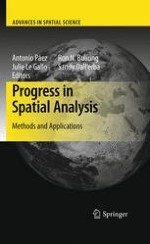2010 | OriginalPaper | Buchkapitel
Omitted Variable Biases of OLS and Spatial Lag Models
verfasst von : R. Kelley Pace, James P. LeSage
Erschienen in: Progress in Spatial Analysis
Verlag: Springer Berlin Heidelberg
Aktivieren Sie unsere intelligente Suche, um passende Fachinhalte oder Patente zu finden.
Wählen Sie Textabschnitte aus um mit Künstlicher Intelligenz passenden Patente zu finden. powered by
Markieren Sie Textabschnitte, um KI-gestützt weitere passende Inhalte zu finden. powered by
